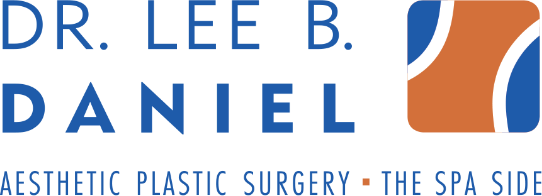September 14, 2009 | Breast Implants
5 minute read

Breast augmentation is one of the most popular cosmetic procedures in the United States, with countless women choosing implants to enhance their breast shape, size, and confidence. But for those planning to become mothers in the future, one important question often arises during consultation: Will breast implants interfere with my ability to breastfeed?
At Aesthetic Plastic Surgery in Eugene, Dr. Lee B. Daniel and our experienced team are committed to helping you make fully informed decisions about your body and your long-term wellness. Below, we explore how breast implants can impact breastfeeding, what the latest research shows, and what surgical techniques can help protect your ability to nurse your child in the future.
Can You Breastfeed With Implants?
The short answer is: yes, most women with breast implants are still able to breastfeed successfully. However, the likelihood of successful breastfeeding may depend on several factors, such as:
-
The type of surgical incision used
-
The placement of the implants (above or below the muscle)
-
The individual’s pre-surgery anatomy and glandular development
-
The experience of the surgeon performing the procedure
Understanding each of these elements will give you a clearer idea of what to expect post-surgery and post-pregnancy.
The Role of Incision Type
Perhaps the most important surgical factor that influences breastfeeding success is where the surgeon makes the incision to insert the implant.
Safer Incision Options for Future Breastfeeding:
-
Inframammary (Breast crease): An incision made under the breast fold. This is the most common approach and is generally safest for preserving the milk ducts and nerves involved in lactation.
-
Transaxillary (Armpit): This avoids any interference with breast tissue entirely, as the implant is inserted through the underarm.
-
Transumbilical (TUBA): A less common approach through the navel, which also avoids the breast glandular tissue.
Higher-Risk Incision for Breastfeeding:
-
Periareolar (Around the nipple): This method has a slightly higher risk of affecting milk ducts and sensory nerves, potentially impacting milk flow or the let-down reflex. While some women still breastfeed successfully after this type of incision, it carries a statistically higher risk of disruption compared to other approaches.
If breastfeeding is important to you, be sure to mention this during your surgical consultation. Dr. Daniel will discuss incision options in detail and recommend a surgical plan that best aligns with your goals.
Implant Placement: Subglandular vs. Submuscular
Another consideration is where the implant is placed:
-
Submuscular Placement (under the chest muscle): This is generally preferred for patients concerned about breastfeeding. It reduces interference with the milk glands and ducts, making breastfeeding more likely to remain unaffected.
-
Subglandular Placement (above the muscle): The implant is positioned closer to the milk ducts and may, in rare cases, compress the glandular tissue or interfere with milk flow.
However, it’s important to understand that neither placement guarantees or eliminates the ability to breastfeed—it’s one part of a larger picture that includes your anatomy and hormonal responsiveness.
Is Breast Milk Safe with Implants?
One of the most common concerns patients raise is whether the presence of implants poses any risk to their baby through breastfeeding. This concern is especially common with silicone implants.
What Does the Research Say?
Multiple studies, including a pivotal one published in Plastic and Reconstructive Surgery in the late 1990s, have found:
-
No elevated levels of silicone in breast milk from women with implants when compared to those without implants.
-
No evidence of harm to infants breastfed by women with either silicone or saline implants.
In fact, cow’s milk and infant formula were found to contain more silicone than human milk from mothers with implants.
FDA Position:
The U.S. Food and Drug Administration (FDA) has reviewed numerous studies and concluded that there is no apparent increased health risk to infants breastfed by mothers with breast implants.
Will My Ability to Breastfeed Change Over Time?
It’s worth noting that even without implants, not all women are able to produce sufficient milk for exclusive breastfeeding. Studies show that 10-15% of women struggle with low milk supply due to various factors like glandular tissue development, hormonal imbalances, or previous breast surgery.
With that in mind, having implants does not automatically rule out breastfeeding success. Working with a lactation consultant post-delivery can greatly help if challenges arise.
Tips for Breastfeeding Success After Augmentation
If you’re planning to become pregnant in the future and want to preserve your ability to breastfeed, here are a few steps to take:
-
Choose an experienced plastic surgeon who understands how different surgical techniques impact breastfeeding.
-
Discuss your goals and express that you intend to breastfeed in the future.
-
Opt for incision sites like the inframammary fold or armpit that avoid breast glandular tissue.
-
Consider submuscular placement to minimize pressure on the milk ducts and glands.
-
Work with a lactation consultant if breastfeeding proves difficult—help is available, and success may still be possible.
Consult with Dr. Lee B. Daniel in Eugene
If you’re considering breast augmentation in Oregon and want to make sure you’re protecting your future ability to breastfeed, our team at Aesthetic Plastic Surgery can help guide your decisions. Dr. Daniel is known for his detailed consultations, customized treatment plans, and dedication to patient safety and education.
Every patient’s body and goals are unique—your breast augmentation plan should be too.
Schedule your consultation today by calling (541) 687-8900 or visiting aestheticplasticsurg.org.
With the right planning, you can enjoy beautiful breast enhancement now—and the joys of motherhood in the future.
